Celtic symbols are a fascinating fusion of history and art reaching far back into the past. Despite the limited knowledge of their history, they continue to influence creative crafts today. All sorts of organisations and individuals around the world use Celtic symbols to show their pride in their Celtic roots.
Ireland is an ancient country and has been home to several civilisations over thousands of years. The Celts were an ancient group of people from Europe who had a deep love and connection with nature. Their symbols often reflect this; Celtic knots, made up of interlacing loops and patterns, symbolising eternity, no beginning or end; The shamrock, the three-leafed national flower of Ireland, considered lucky and a symbol of protection; the ancient Triskele, pre-dating Celtic culture but admired by the Celts and used in their artwork everywhere.
These symbols are not just relics of the past; they've left an impact on art today. From jewellery to tattoos to clothing designs, Celtic and Irish symbols find new life in modern culture. They act as a bridge between history and the present, connecting us with the Celts' way of life.
Celtic Symbol Authenticity
Celtic symbols, with their intricate knots, spirals, and interwoven patterns carry messages of spirituality, unity, and cultural heritage.
However, in the modern age of digital reproduction and misinformation, it has become more important to distinguish authentic Celtic symbols from the many imitations claiming to be ancient Celtic symbols.
Proving the authenticity of these symbols requires a mix of historical research, archaeological evidence, and an understanding of Celtic culture.
Historical evidence
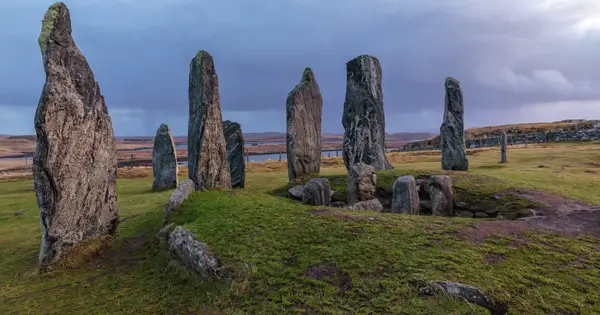
The Celts were a diverse group of tribes that inhabited regions of Europe from around 1200 BCE to the early centuries CE. They left behind a rich legacy of art, inscriptions, and artefacts that provide insights into their culture and symbolism.
The study of archaeological finds like stone carvings, metalwork, and manuscripts allows us to establish a direct connection to the ancient Celts and their symbolic language.
Celtic Design

Celtic symbols often have intricate patterns, where lines and curves flow seamlessly into one another. Symmetry and repetition in Celtic art reflect the Celts' fascination with cycles, seasons, nature and the connection of all life. The symbols are often inspired by elements like animals, plants, and celestial bodies.
Where do Celtic symbols come from?
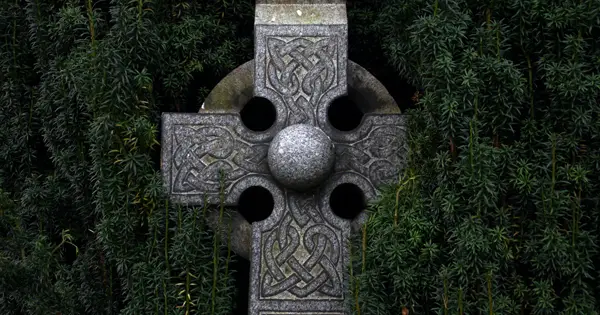
Different regions of Celtic culture, such as Ireland, Scotland, Wales, Brittany, and parts of England and Spain, developed their own variations of these symbols over time. Each region contributed to the evolution of Celtic art and symbolism, resulting in unique regional styles you might recognise.
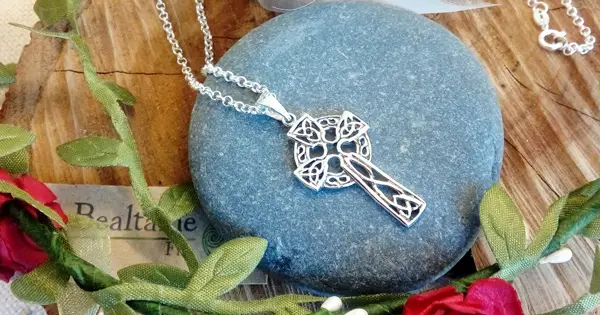
Shop Celtic Symbols on Bealtaine Fire
How were Celtic symbols used?
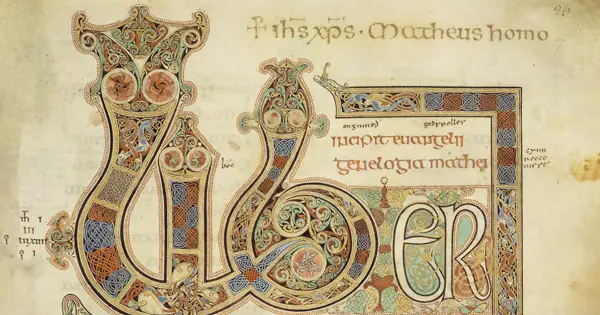
By looking at how symbols were used in the past, we can tell if they are genuine or not. For example, symbols found in places where Celts were buried or on objects they used for their religion are likely to be authentic. Also, symbols in old manuscripts and carvings that record important events or beliefs are also likely genuine.
Modern Celtic symbols
All that considered, we shouldn't just dismiss modern Celtic symbols just because they might have a less historical background. Symbols evolve over time and new ones can carry meaning that's relevant to today.
They connect people to their heritage and culture, even if they're not age-old. Just like ancient symbols, new ones can still tell stories and hold significance in people's lives. So, it's important to appreciate both the old and the new, because they all contribute to keeping the spirit of Celtic tradition alive in the present day.
Celtic Symbols and their meanings
The meanings of Celtic symbols are as varied as the symbols themselves. They draw from a tapestry of Celtic mythology, folklore, and daily life, where each symbol carries its own story and purpose.
From representing eternity and the cycle of life to serving as protective talismans, these symbols offer us a glimpse into the spiritual and cultural beliefs of the Celts.
Celtic symbols are not just pretty motifs; they are windows into a rich and diverse cultural heritage. By looking at the historical and artistic aspects of these symbols, we can ensure their true value is preserved and celebrated for generations to come.
Celtic Protection Symbols

Although Celtic symbols hold a variety of different meanings, many are associated with protection. These symbols were believed to possess mystical powers that could ward off negative energies and evil spirits, and bring luck and safety to those who wore or displayed them.
One well-known Celtic protection symbol is the Celtic Knot, in particular, the Shield Knot and Dara Knot, and to some extent, the Triquetra. They display a continuous looping pattern with no beginning or end. They symbolise the eternal cycle of life, death, and rebirth, as well as the connection between all things. The design was thought to confuse evil forces and prevent them from entering one's life.
The Shamrock, with its three heart-shaped leaves, was also associated with protection. It was believed to bring good fortune and ward off evil spirits. Its connection to St. Patrick and his Christian teachings further solidified its protective connotations.
The horseshoe is not originally a Celtic symbol, it has origins in many cultures. However, it was used and is still known for its protective and luck-bringing qualities. These qualities have led to its use in folklore, traditions, and decorative items.
While their mystical powers might be viewed differently in modern times, these symbols continue to be cherished for their historical importance and the sense of protection and guidance they represent.
Celtic Symbols for Family

Celtic culture doesn't have a single specific symbol that means "family." However, the Celtic Knot, with its looping, overlapping patterns, is often thought of as a symbol of connectedness and the relationships between family members.
A modern example of this would be the Celtic Motherhood Knot, depicting two hearts intertwined, one within the other. The more traditional Triquetra could also be considered a knot representing the father, mother and child, among many other meanings attributed to it.
Another symbol, the Claddagh ring, represents love, loyalty, and friendship, and while it's often associated with romantic relationships, it can also symbolise family connections. So, while there isn't a direct Celtic symbol exclusively for family, these three symbols can carry a sense of family and relationships within Celtic culture.
Celtic Symbols for Strength

Again, the Celtic culture doesn't have a specific symbol exclusively representing strength. However, one of the symbols often associated with strength and power in Celtic art and tradition is the Dara knot.
The Dara Knot is a type of Celtic Knot that is sometimes interpreted as a symbol of strength. It's based on the oak tree and its deeply rooted and sturdy nature. The Celts admired the oak tree for its strength, longevity, and wisdom. This knot reminds us to have inner strength and toughness, like the oak tree.
Another symbol that could represent strength is the Triskele, which has three spirals joined together. While it has many diverse meanings, it can represent personal growth and the strength we gain from our life experiences.
It's important to note that these meanings might vary and evolve over time, and people may find their own symbols within Celtic culture that fit in with their understanding of strength.
16 Celtic Symbols
Brigid's Cross - Symbol of Imbolc
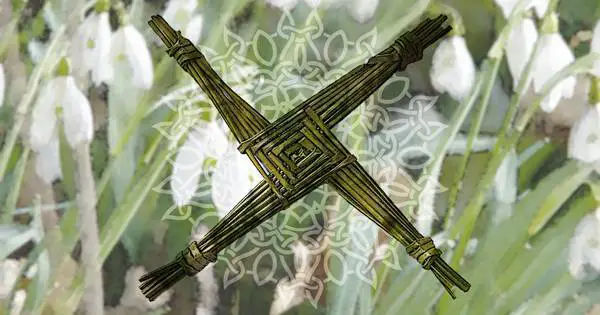
The Brigid's Cross is a traditional Celtic symbol, typically woven from straw or rushes, associated with the Irish goddess Brigid (or Saint Brigid in Christian tradition).
It consists of a woven square with four arms that extend outward, creating a cross-like shape. Often used in rituals and celebrations, the Brigid's Cross is a symbol of protection, blessings, and the transition from winter to spring.
It holds cultural significance as a representation of Irish heritage and spirituality, embodying themes of renewal, light, and the interconnectedness of nature and spirituality. More here
Celtic Cross - Faith and culture combined
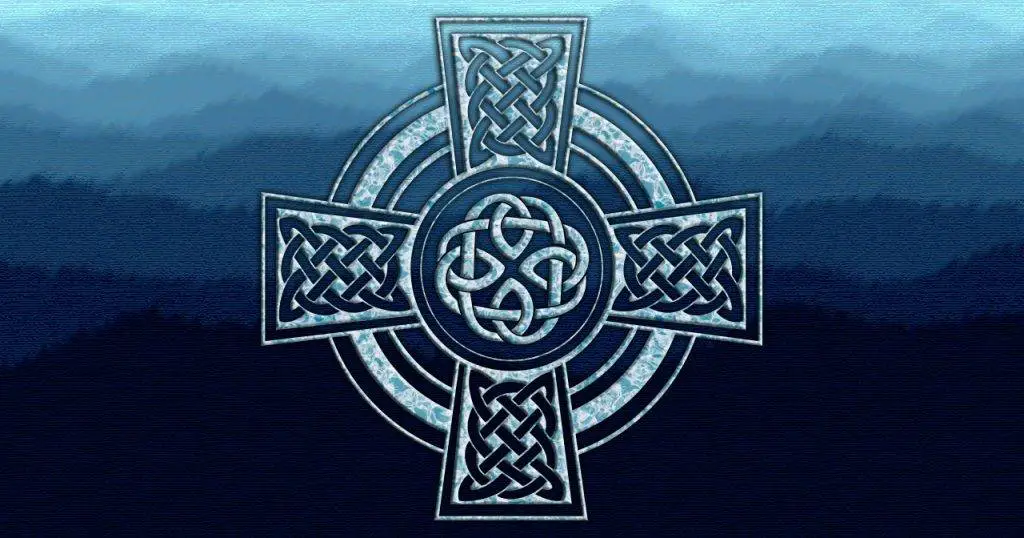
The Celtic cross is a symbol of both culture and faith. The true origins are unknown but there are many theories and legends.
It came about from a blend of Celtic and early Christian traditions, fusing Christian symbolism with elements rooted in ancient pagan beliefs. Some believe the vertical arm represents the divine realm, while the horizontal arms embody earthly existence. The encircling ring, tracing back to pagan sun worship, symbolizes eternity and the interconnected cycles of life.
This cross, widely associated with Irish heritage, holds deep layers of meaning, bridging spirituality, cultural legacy, and a tapestry of diverse belief systems throughout history. It can be found in sacred places and cemeteries across Ireland and the UK. More here
Green Man - Symbol of rebirth
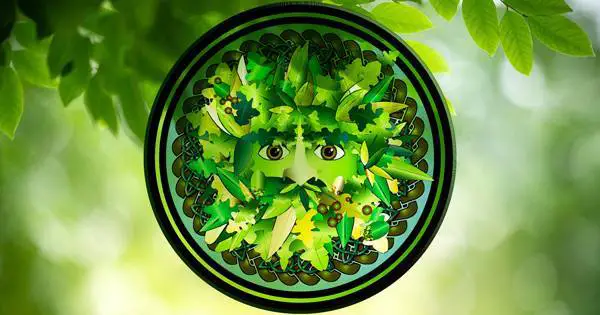
The Green Man is an ancient Celtic symbol that symbolises the coming of Spring and represents rebirth and vegetation. He is also known as the ‘Man in the Tree’, ‘Derg Corra, Viridios’ and ‘Jack o’ the Green’.
This image has been used in art around the world and on architecture around Ireland and Britain, usually on religious buildings, to show how nature keeps renewing itself. It's a reminder that we're linked to the natural world and that life always starts again.
The Green Man is still meaningful today, as seen in art, nature themes, and our efforts to take care of the environment. More here
Shield Knot - Protection symbol
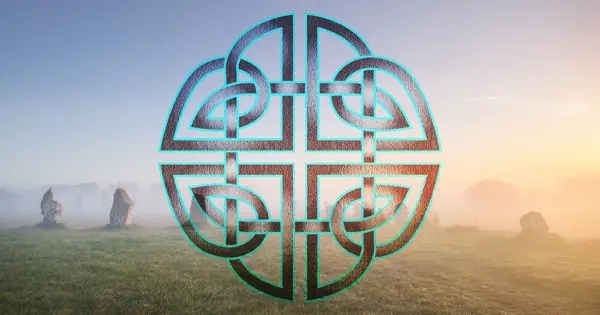
The Celtic Shield Knot, also known as the Celtic Symbol of Protection, is a distinctive interwoven design with no beginning or end. It is known as the shield knot because it bears a resemblance to a decorative pattern found on shields and armour used by Celtic warriors.
Originating from Celtic culture, it symbolises unity, protection, and connection. The unbroken lines represent the continuous cycle of life, death, and rebirth.
Often used today in art, jewellery, and tattoos, the knot carries spiritual significance as a guardian against negative forces. Its intricate pattern also reminds us of how things are always connected.
Spiral - Nature's symbol

The spiral is an ancient and universal symbol found in various cultures around the world, including Celtic culture. Its origins are deeply rooted in prehistoric times, often linked to natural phenomena like shells, galaxies, and whirlpools.
In Celtic art, the spiral is a prominent symbol, often found on artefacts, jewellery and monuments. It likely had spiritual significance, representing things like growth, important cosmic forces, such as the sun, and life's journey.
The spiral is, in fact, the oldest symbol in Celtic culture, perhaps one of the oldest in the world. It demonstrates the human need to find patterns in nature and express their mysteries through art and symbolism. More here
Tree of Life - Symbol of connection

The Celtic Tree of Life is an ancient symbol depicting a tree with roots and branches reaching outwards. It represents the connection between all living things as well as our connection to the Otherworld, the world of our ancestors.
In Celtic beliefs, trees held profound wisdom and spiritual significance, linking the earth and sky. They provided shelter food, and warmth through firewood. They also acted as a home for other animals, birds and insects. This symbol represents how life grows, changes, and is all tied together.
While the exact ancient meaning might have changed, today it's still a reminder of nature's importance and our place in it. It's a way to celebrate our history and the cycles of life that continue. More here
Triquetra - Trinity Knot
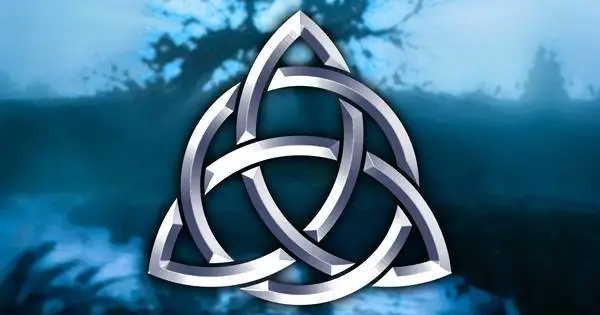
The Celtic Triquetra, also known as the Trinity Knot, is a symbol composed of three intertwined loops. It's associated with unity, eternity, and the power of threes.
In Celtic culture, it holds many meanings, including the representation of the Holy Trinity in Christianity or the cycles of life, death, and rebirth. Some see it as a Celtic symbol for family, with the three loops representing mother, father and child.
This knot has deep historical roots and people have used it in art, jewellery, and religious practices for centuries. It is a way to show the connection between different aspects of life and faith, symbolising an eternal spiritual life. More here
Triskele - Ancient symbol
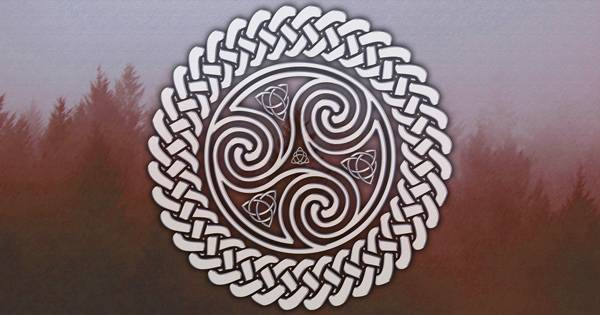
The Triskele or Triskelion is one of the most ancient Irish symbols, over 5,000 years old. The Triskele is a Neolithic symbol with three swirling legs or spirals connected at a centre point.
Its ancient design represents various things, such as cycles of life, death, and rebirth. It might also represent the Celtic belief in the triad, that everything happens in threes, such as; past, present, and future; mother, father, child; body, mind, spirit; land, sea, and sky. The symbol is also thought to represent continuous movement or continuously moving forward.
Although the Triskele pre-dates the Celts, it was used by Celtic cultures and frequently appears in Celtic artwork. Similarly, when the Christian church came to Ireland during the 5th century, they also adopted the triskele symbol using it as a tool for teaching the Holy Trinity. More here
Irish Symbols
Claddagh Ring - Celtic Love Symbol
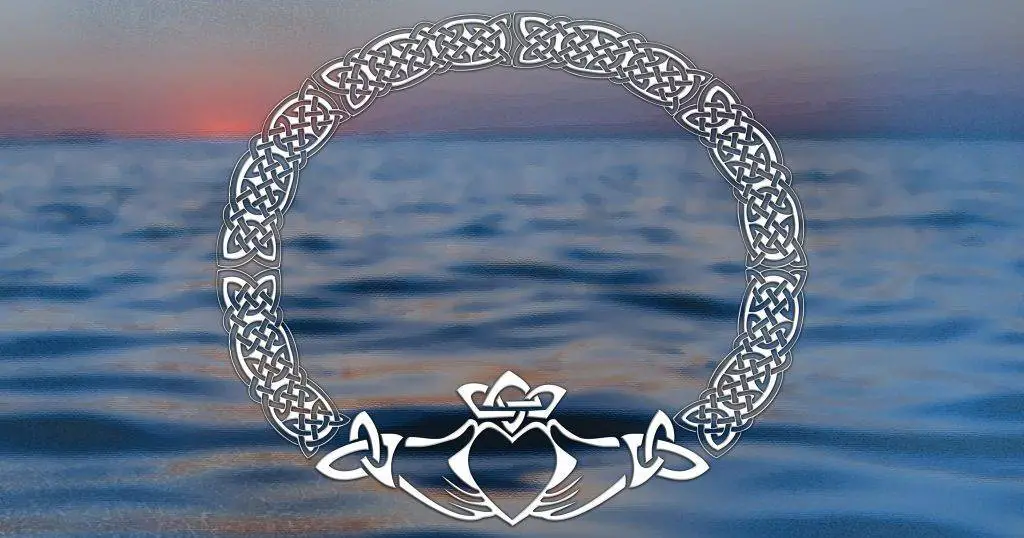
The Claddagh Ring symbolises love, loyalty and friendship. It is possibly one of the most well-known Irish symbols and is thought of as a Celtic symbol of love. The history of the ring can be traced back to the 17th century, to the small fishing village of Claddagh, located just outside Galway City.
No one is sure who first came up with the design but there are, of course, several interesting theories and stories.
The Claddagh ring is a symbol of connection and commitment, often exchanged as a token of love or friendship, and worn to represent a person's Irish heritage. The way it is worn can indicate a person's relationship status. More here
Easter Lily - A symbol of hope and peace
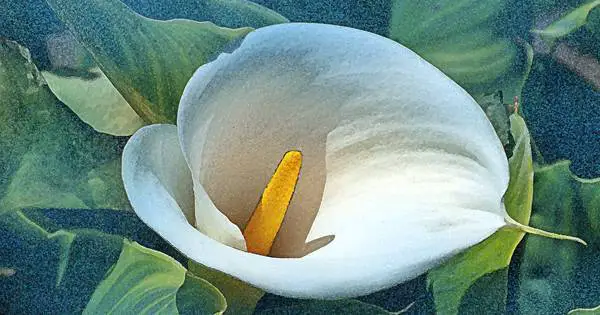
The Easter Lily is worn as a mark of respect for Irish nationalists who have died in battle and as a symbol of hope and peace for the future.
It originated in 1925, created by members of Cumann na mBan, which was an all-female organisation in support of the Irish Republican Army. They created the Easter Lily nine years after the Rising. It was sold to raise money to help support the families that had lost their husbands and fathers. At the time, people in Ireland were still suffering the after-effects of war.
The Easter Lily is a fitting symbol for Irish nationalists. It blooms in the springtime, which coincides with the anniversary of the 1916 Easter Rising. More here
Harp - National emblem of Ireland

The Harp is an ancient instrument and a national emblem of Ireland.
The harp has been linked to the Celts for centuries, symbolising cultural identity and artistic expression. The harp's music is gentle and soothing. In the days of the old chieftains, harpists were held in high regard. Stories were often told to the music of the harp and it encompassed the spirit of the country.
In the 16th century, the music of the harp was seen as such a threat that The British Crown attempted to crush the Irish Spirit by ordering all harps to be burnt and all harpists executed. It was almost 200 years before the music of the harp was freely enjoyed in Ireland once again. More here
Shamrock - National flower of Ireland
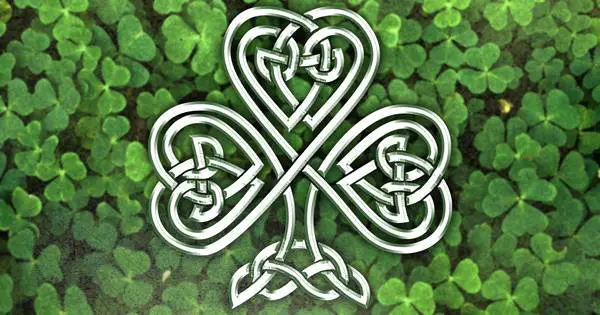
The Shamrock is the national flower of Ireland and has had significance in the country since the days of the Druids. It is a simple and recognisable symbol that represents a three-leaved clover. In fact, the name "shamrock" comes from the Irish word "seamróg," meaning "young clover."
Legend has it that St. Patrick, the patron saint of Ireland, used the shamrock to explain the concept of the Holy Trinity, with the three leaves symbolising the Father, the Son, and the Holy Spirit.
Today the Shamrock has become a well-known symbol of luck and is a common motif in celebrations like St. Patrick's Day. People wear or display it proudly to express their Irish heritage or simply to join in the festive spirit. More here
Modern Celtic Symbols
Awen - Balance and harmony
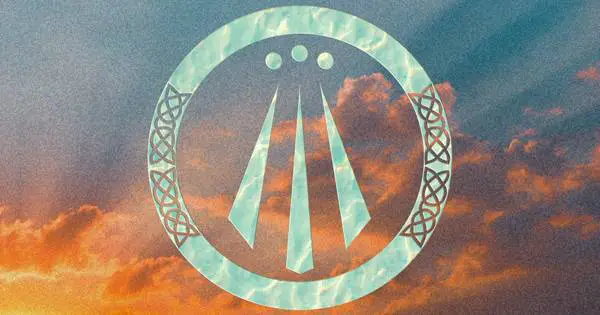
Awen is a Celtic word meaning inspiration or essence. The Awen symbol represents inspiration or divine illumination and it is one of the lesser known, more modern Celtic symbols.
It's particularly important in Druidry, an ancient belief system with modern followers. The symbol consists of three lines – two that form a shape like an upside-down "V," and a third line that intersects the "V" shape in the centre. These lines represent different ideas. The two lines forming the "V" can stand for many things, like male and female energy or earth and sky. The third line, connecting them, can symbolize balance and harmony.
The Awen symbol represents inspiration, wisdom, and the flow of creative energy. In Druidry, it's seen as a way to connect with the divine and tap into your inner creativity. Modern Druids and others interested in Celtic spirituality often use it in rituals, art, and jewellery. More here
Dara Knot - A symbol of strength
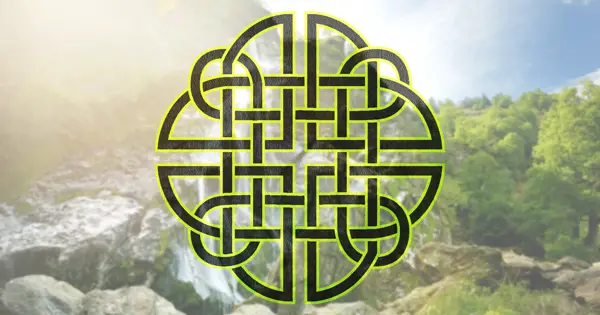
The Dara Knot is a Celtic symbol for protection and strength that resembles a square knot with branching lines. "Dara" (or "Duir" in the Ogham alphabet) translates to "oak tree" in Old Gaelic, and this knot represents the mighty oak's strength and wisdom.
The term "Dara Knot" is often associated with Celtic design and symbolism, but it's important to note that it is not an ancient Celtic symbol. Instead, it is a more modern interpretation and adaptation of Celtic knotwork.
It's a symbol of endurance, stability, and rootedness. In Celtic beliefs, the oak tree was sacred, representing protection and knowledge. The branching lines in the Dara Knot might also symbolise growth and inner strength.
Although the exact meaning may have evolved, the Dara Knot combines the spirit of resilience and the connection with Celtic heritage. It is often used in art, jewellery, and tattoos today. More here
The Celtic Motherhood Knot
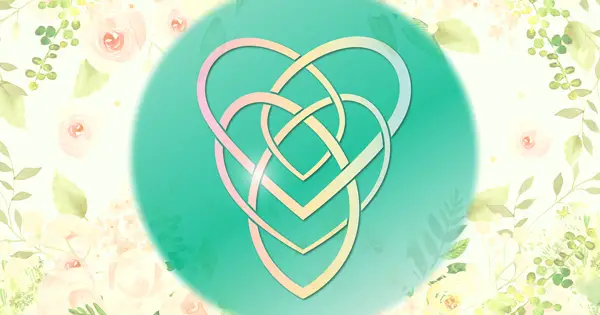
The Celtic Motherhood Knot is a simple yet powerful symbol that represents the special bond between a mother and her child. It's a unique variation of the traditional Celtic Knot, symbolising eternity and connection. The Celtic Motherhood Knot, however, adds a distinctive heart-shaped design to the centre of the knot, enhancing its symbolism to focus on the maternal connection.
The knot itself consists of two intertwined hearts that form an unbroken line. The hearts are symbolic of a mother and child, forever linked in an eternal bond of love and care. The heart in the centre of the knot represents the love that a mother holds for her child, emphasising the nurturing and protective qualities that are integral to motherhood.
This symbol is often used to celebrate motherhood, whether as a gift to a new mother, a gesture of appreciation for a mother's love and sacrifice, or as a personal reminder of the unbreakable connection between a mother and child. It can be found in various forms, from jewellery like pendants and rings to artwork and tattoos.
The Celtic Motherhood Knot is not only a beautiful design, it also carries deep emotional significance. It serves as a reminder of the selfless love and devotion that mothers provide to their children.
The Ogham Tree Calendar
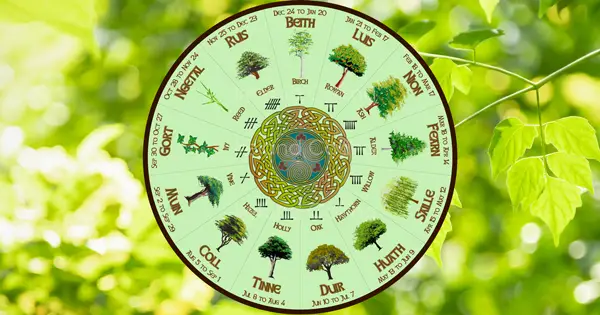
Not strictly a symbol, the Ogham Tree Calendar, based on the Ogham Alphabet, was introduced in Robert Graves' book "The White Goddess" in 1948. It is a modern idea that associates trees with each of the 13 lunar months.
Despite its historical accuracy being debated, the Calendar has inspired interest in Celtic spirituality and traditions. Its influences lie within ancient Celtic mythology and folklore. The Celtic people believed each tree possessed unique qualities, characteristics and energy, and historical evidence suggests they followed a lunar calendar.
The Ogham Tree Calendar is a beautiful example of how modern spiritual beliefs and the customs of ancient times can be combined to form something enchanting. More here
